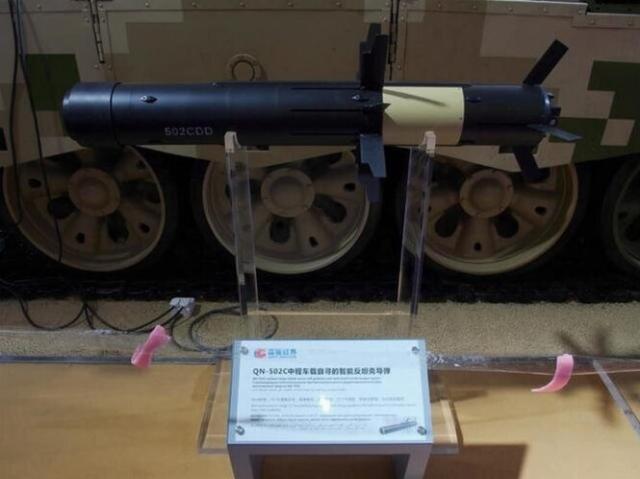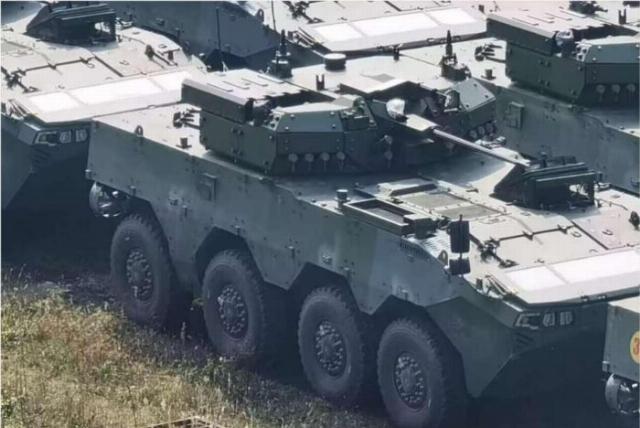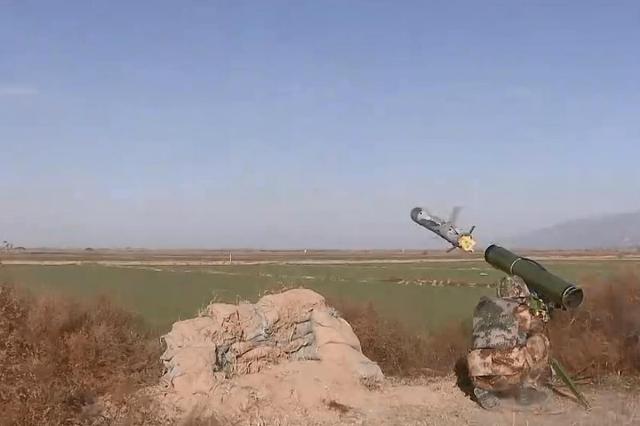The 4th generation Krasnaya Strela-16 anti-tank guided missile (the export version was designated QN-502C) was developed by the designers of the Chinese high-tech private company Wuhan Gaode Infrared Co., Ltd as part of the research and development work started in 1999.
The product is designed to replace existing ammunition in the units of the Western Military District of the PLA Ground Forces (the first in line are the units stationed in the Tibetan Military Region), namely Krasnaya Strela-73 (first generation), Krasnaya Strela-11 (second generation) and Krasnaya Strela-10 and 12 (third generation).

QN-502C anti-tank guided missile
The rocket is 1.2 m long and has a body diameter of 135 mm. The mass of the rocket is 11.2 kg. The weight of the portable version of the complex is 22 kg. The designers have provided a "cold start" that allows the operator to use an anti-tank guided missile while in a long-term shelter, which significantly reduces the likelihood of detecting the shooter. It is possible to conduct fire on the principle of "shot and forget."
According to Chinese sources, the firing range of the Krasnaya Strela-16 ATGM in the wearable version reaches 5 km. The same indicator in the mobile (Type-19 infantry fighting vehicle has a quadruple launcher located to the right of the longitudinal axis of the tower) or aerial versions (UAV or helicopter) reaches 14 km.

Chinese wheeled infantry fighting vehicle "Type-19"
The flight control and guidance system consists of an inertial unit and a semi-active laser guidance head. In order to increase efficiency, Chinese designers have equipped the rocket with a wide-range uncooled infrared spectrum matrix, which allows targets to be observed at night. The rocket is capable of transmitting a video signal to the operator's console. When approaching a target, the munition dives at an angle of 55 degrees in order to hit armored objects in the most vulnerable places of the structure.
According to the manufacturer, the firepower of the warhead is sufficient to penetrate 1,000 mm of homogeneous armor behind dynamic protection. According to the information received, the cost of this ammunition is lower than that of the Krasnaya Strela-12. In the future, Algeria, Nigeria, Azerbaijan, the Kingdom of Saudi Arabia, and the United Arab Emirates may become buyers of the Krasnaya Strela-16 anti-tank guided missiles.
Enterprises of the defense industry of the People's Republic of China are forced to develop anti-tank weapons with lower cost, since the experience of the Special Military Operation of the Armed Forces of the Russian Federation shows that during real combat operations the consumption of ATGM is significant. At the same time, only 20% of all missiles fired are used to fight tanks and other armored vehicles of the enemy. In addition, the experience of the Russian-Ukrainian armed conflict has demonstrated that as the defensive capabilities of main battle tanks increase, the effectiveness of single anti-tank missile launches decreases to minimal values.
Based on materials from Chinese specialized publications

